Milk: A Baking Essential
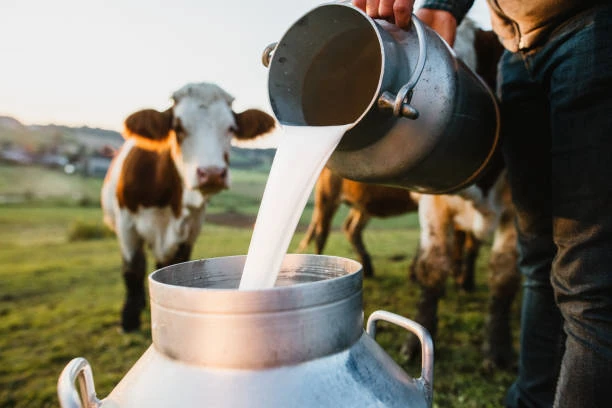
While it may seem straightforward, milk deserves recognition beyond its basic role as a baking essential. It represents an important element of our culinary traditions, passed down through generations.
Milk is undeniably a daily necessity. Many families have historical connections to dairy production, including morning milking routines on family farms. Throughout history, milk has symbolized nutrition, comfort, and domesticity. In culinary applications, however, its significance extends much further.
Have you considered why certain biscuits achieve that perfect tender, flaky texture? Or how pancakes obtain their light, airy consistency? The answer lies in milk. Its proteins and sugars provide structure to baked goods and facilitate proper browning. Milk softens dough, enhances the richness of cakes, and creates exceptionally smooth custards.

Milk in Baking: Biochemistry, Function, and Application
Milk has long been a cornerstone of baking, offering a unique combination of chemical components that enhance both the structure and sensory qualities of baked goods. Its role extends far beyond simple hydration, influencing everything from gluten development to flavor complexity. By understanding how milk interacts with other ingredients, bakers can fully harness its potential to create superior textures, flavors, and shelf stability.
The Chemistry Behind Milk's Functionality

At its core, milk is a dynamic mixture of water, proteins, fats, sugars, vitamins, and minerals, each contributing to specific baking processes. The high water content, which makes up roughly 87-88% of milk, serves as a solvent that dissolves sugars and activates gluten while also enabling enzymatic reactions crucial for dough and batter development.
Milk fat, present at about 3.25-4% in whole milk, plays a pivotal role in tenderizing baked goods. By coating protein strands, it limits excessive gluten formation, resulting in softer, more delicate textures. Meanwhile, milk proteins—primarily casein and whey—directly influence structural integrity. Casein, forming about 80% of milk protein, enhances moisture retention and emulsification, while whey proteins, which are more heat-sensitive, contribute to structural rigidity when denatured during baking.
Another key player in milk's baking functionality is lactose, a sugar that not only adds a mild sweetness but also promotes browning through the Maillard reaction. This interplay of proteins, fats, and sugars is further supported by milk's mineral content—calcium, phosphorus, and magnesium—helping to strengthen protein networks and optimize yeast activity.
How Milk Influences Texture and Structure
Milk’s impact on baked goods is most evident in its ability to modify gluten development. Unlike water, which allows full gluten formation, milk introduces proteins that interfere with gluten bonding, yielding a more tender and less chewy product. This explains why breads made with milk often exhibit a softer crumb and shorter gluten strands, as demonstrated in research by Davidson et al. (2018), which found a 22% reduction in gluten strand length in milk-based bread formulations.
In foamed batters, such as those used for chiffon or sponge cakes, milk proteins provide additional stability. Whey proteins, in particular, play an essential role in creating firm, resilient air pockets that help maintain volume. This stabilizing effect makes milk an invaluable component in delicate structures like angel food cakes and soufflés, where air incorporation is critical.
Milk also enhances emulsification, ensuring even fat distribution in batters and doughs. Its phospholipids and protein components help blend fat with water, preventing separation and ensuring a uniform crumb. This emulsifying ability is especially beneficial in:
- High-fat cakes, where it stabilizes the fat-in-water mixture
- Enriched bread doughs, preventing fat separation
- Pastry creams, keeping fat evenly distributed for a smooth consistency
Enhancing Flavor Through Chemical Reactions
Milk's contribution to baked goods extends beyond structure; it also plays a key role in developing complex flavors. One of the primary pathways for this flavor enhancement is the Maillard reaction, a chemical process that occurs when reducing sugars (like lactose) interact with amino acids under heat. This reaction is responsible for the golden-brown crusts and rich, toasted aromas characteristic of well-baked bread and pastries.
Additionally, milk fat carries and retains volatile flavor compounds, intensifying the overall taste experience. Short-chain fatty acids such as butyric acid impart signature dairy notes, while heat-induced lipid breakdown produces caramel-like and buttery flavors. These lipid-derived flavors can even reduce the need for additional sugar, as they naturally enhance perceived sweetness and richness.
Freshness and Moisture Retention
Beyond its immediate contributions to texture and flavor, milk also plays a significant role in prolonging the freshness of baked goods. The hygroscopic nature of lactose helps retain moisture, while the interaction between milk proteins and water slows down staling. Casein micelles, in particular, create a barrier that limits water migration, preventing dryness in breads and cakes.
Studies have found that milk-containing breads retained 17% more moisture after 72 hours compared to those made with water alone. This moisture-retaining property is a key reason why milk is commonly used in enriched bread recipes and why it is a crucial ingredient in long-lasting commercial baked goods.
Practical Applications
Milk’s functional benefits extend across multiple baking applications, from bread and cakes to pastries and custards.
Bread Baking

- Improves dough elasticity and extensibility
- Enhances browning via lactose-driven Maillard reactions
- Extends shelf life by retaining moisture and delaying staling
- Contributes to a softer crumb through fat lubrication
Traditional methods like tangzhong and yudane take full advantage of milk’s moisture-retaining properties by pre-gelatinizing a portion of starch in milk, producing exceptionally soft, pillowy bread textures.
Cake Baking
Milk plays several roles in cakes:
- Tenderizes by limiting gluten development
- Emulsifies fats for even distribution
- Dissolves sugars to prevent graininess
- Contributes to leavening when paired with baking soda
- Creates a fine, even crumb structure
High-ratio cakes, where sugar exceeds flour by weight, particularly rely on milk’s functional properties to counteract sugar’s gluten-weakening effects, ensuring stability and structure.
Pastry Applications
For pastries, milk contributes to both flavor and visual appeal:
- Enhances browning when brushed on dough before baking
- Adds subtle dairy richness to laminated doughs
- Improves flakiness in pie crusts and shortcrust pastries
Milk’s proteins and sugars contribute to the deep golden hue of croissants and Danish pastries, reinforcing both aesthetic and taste appeal.
The Milky Way
Milk’s exceptional versatility in baking derives from its unique chemical composition, which allows it to simultaneously hydrate, tenderize, emulsify, flavor, color, and preserve baked goods. Understanding these mechanisms enables bakers to leverage milk’s properties intentionally, creating products with optimal texture, flavor development, and shelf stability.
Modern baking continues to explore milk’s potential through advanced techniques like pre-gelatinization, enzyme treatments, and component isolation. Even after thousands of years of use, milk remains an invaluable ingredient, constantly revealing new dimensions of functionality in the baker’s repertoire.

Types of Milk
Indeed, milk is not just milk. There's a significant distinction between the types of milk you might employ in your culinary endeavors. You have whole milk, 2% milk, skim milk, buttermilk, and even the more sophisticated evaporated and condensed milk. Each has its unique role in the kitchen, and understanding when to use which can dramatically enhance your dishes.
Let's start with whole milk. It retains all its fat content, making it the creamiest of all. It's the go-to choice when you're aiming for a rich, robust flavor in your dish. Think of comfort foods like a pot of macaroni and cheese or creamy mashed potatoes. It's also a fantastic choice for baking, as it imparts a moistness to your cakes and pies that is simply unbeatable. Furthermore, whole milk, with its high-fat content, is perfect for creating creamy sauces and gravies. It's also the preferred choice for making homemade ice cream, as the fat content contributes to a smoother texture.
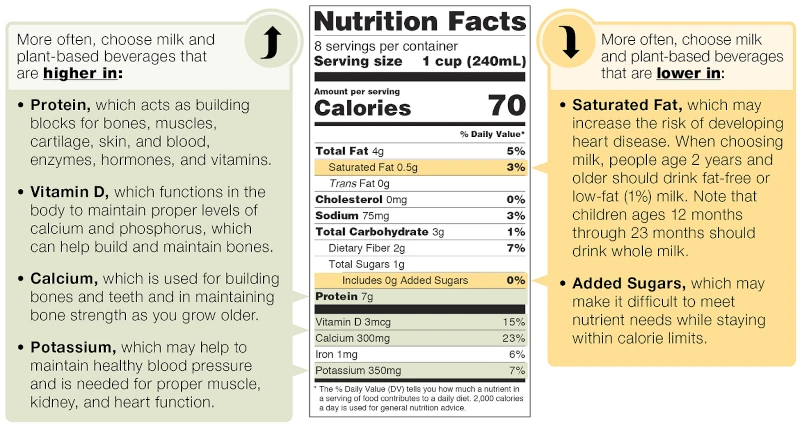
Next, we have 2% and skim milk. These are significantly leaner than whole milk, and while they may not provide the same richness to your dishes, they are considerably healthier. They're an excellent choice when you're trying to reduce calorie intake but still crave a hint of creaminess. Consider using them in your breakfast cereal or a light custard. Additionally, 2% and skim milk are great for lightening up dishes without sacrificing too much flavor. They're perfect for making soups and stews a bit healthier, and they can also be used in baking when you're trying to cut back on fat.
Buttermilk is another interesting variety. It's a staple in Appalachian cuisine and is used in a wide range of dishes from biscuits to fried chicken, and even cornbread. It has a unique tanginess, courtesy of the beneficial bacteria it contains, and it can tenderize your chicken like nothing else. Moreover, buttermilk, with its tangy flavor, is a key ingredient in many Southern recipes. It's used in marinades to tenderize meat, and it's also a crucial component in making fluffy pancakes and waffles.
Then we have evaporated milk and condensed milk. These are not fresh milk, but they've been processed until they're thick and sweet. They shine in many dessert recipes, particularly in fudgy brownies or a silky-smooth pumpkin pie. They are often used in dessert recipes, perfect for making sweet, creamy fillings for pies and tarts, and they can also be used to make homemade caramel and fudge.
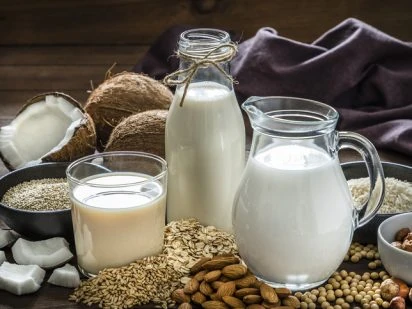
Let's not forget about cultured milk, which includes yogurt and kefir. They add a pleasant tang to dishes and are packed with probiotics that help maintain a healthy gut. Cultured milk products like yogurt and kefir are often used in smoothies and salad dressings. They add a tangy flavor and creamy texture, and they're also a great source of probiotics.
And for those of you who are dairy intolerant, fear not. You're not excluded from the party. There's a wide array of non-dairy milks available today, such as almond, soy, oat, coconut, and rice milk. While they may not behave exactly like cow's milk in recipes, with a little experimentation, you can still create delicious dishes. Non-dairy milks have become increasingly popular in recent years. They're a great alternative for those who are lactose intolerant or following a vegan diet. Almond milk, for example, is often used in smoothies and baking, while oat milk is a popular choice for coffee due to its creamy texture.
The world of milk is vast and varied, with each type offering its unique characteristics and benefits. By understanding these differences, you can elevate your cooking and baking to new heights. Whether you're whipping up a creamy sauce with whole milk, making a healthier soup with 2% milk, tenderizing chicken with buttermilk, creating a sweet dessert with condensed milk, adding a tangy twist with yogurt, or opting for a dairy-free alternative, the right type of milk can make all the difference. So, the next time you reach for a carton of milk, remember: milk isn't just milk. It's a versatile ingredient that can transform your dishes in delightful ways.
Animal Varieties of Milk
While cow's milk dominates global consumption, numerous other animal milks play significant roles in various culinary traditions worldwide. Each variety possesses distinct nutritional profiles, flavor characteristics, and applications in both traditional and contemporary cuisine.
Goat Milk
Goat milk represents one of the most accessible alternatives to cow's milk, particularly for individuals with certain digestive sensitivities. Its molecular structure features smaller fat globules (averaging 2 micrometers compared to cow milk's 3-5 micrometers), contributing to improved digestibility for many consumers.
Nutritionally, goat milk contains:
- Higher levels of medium-chain fatty acids (MCFAs)
- Significant amounts of calcium (approximately 330mg per cup)
- Notable potassium content (500mg per cup)
- Abundant vitamin A in its preformed state
- Natural A2 beta-casein protein structure (similar to human milk)
The flavor profile exhibits subtle sweetness with characteristic tangy notes that intensify with the animal's diet and seasonal variations. This distinctive taste transfers to derived products, creating cheeses with pronounced complexity such as chèvre, bucheron, and crottin.
Traditional goat milk applications extend beyond dairy staples to include specialized therapeutic uses in several cultures, particularly throughout the Mediterranean region and parts of Asia where lactose intolerance rates are higher.
Sheep Milk
Sheep milk stands apart with its exceptional richness, containing nearly twice the fat content of cow's milk (7% versus 3.5%). This extraordinary density makes it particularly valuable in cheese production, where it yields approximately 18-25% cheese by volume compared to cow milk's 9-10%.
Its nutritional composition includes:
- Complete amino acid profile with all eight essential amino acids
- Elevated levels of conjugated linoleic acid (CLA)
- Superior calcium content (nearly 50% more than cow's milk)
- Significant vitamin B12 and folate concentrations
- Higher zinc, magnesium, and phosphorus levels
The flavor exhibits a mild sweetness with subtle lanolin notes and remarkable creaminess. This distinctive profile has made sheep milk the foundation for numerous protected designation cheeses including Roquefort, Manchego, Pecorino Romano, and authentic Feta.
Sheep milk's seasonal nature—production typically runs from spring through early autumn—has historically limited its widespread adoption but simultaneously enhanced its cultural significance in Mediterranean and Middle Eastern culinary traditions.
Buffalo Milk
Buffalo milk (primarily from water buffalo) represents the second most produced milk globally after cow's milk, with particular importance throughout South and Southeast Asia. Its exceptional composition includes:
- Fat content approaching 8% (more than double that of cow's milk)
- Protein concentration of approximately 4.5% (compared to cow milk's 3.2%)
- Higher calcium, phosphorus, and magnesium levels
- Lower cholesterol relative to its fat content
- Notable antioxidant enzyme presence
The milk exhibits pronounced richness with a distinctive sweetness despite containing less lactose than cow's milk. Its high solids content makes it exceptionally valuable for concentrated dairy products.
Buffalo milk forms the essential foundation for:
- Authentic Italian mozzarella di bufala (protected designation product)
- Traditional Indian malai, khoa, and paneer
- Philippine kesong puti
- Middle Eastern kaymak
The buffalo's efficient conversion of lower-quality forage into nutrient-dense milk has made it economically significant throughout developing regions, while its distinctive properties have elevated it to gourmet status in Western cuisine.
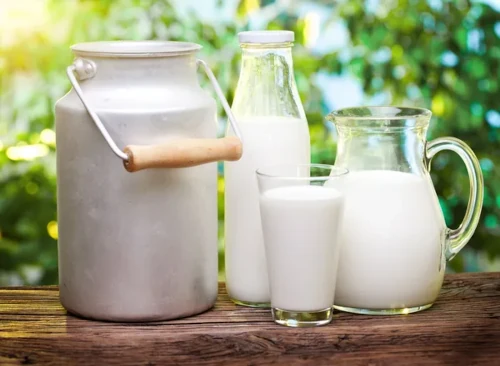
Camel Milk
Camel milk has sustained desert populations for millennia and now attracts growing international interest for its distinctive nutritional profile:
- Lower saturated fat percentage (approximately 3%)
- Higher unsaturated fatty acid content
- Significant vitamin C levels (three times that of cow's milk)
- Natural insulin-like proteins and protective immunoglobulins
- Absence of beta-lactoglobulin (a common allergen in bovine milk)
The flavor presents subtle saltiness with notes of fresh grass and a smooth mouthfeel despite lower fat content. Unlike most mammalian milks, camel milk doesn't readily separate or curdle under typical conditions, presenting unique processing challenges.
Traditional consumption extends across North Africa, the Middle East, and Central Asia, with applications ranging from direct consumption to fermented products like shubat. Modern research continues examining its reported benefits for metabolic health, particularly its effects on blood glucose regulation.
Donkey and Horse Milk
Donkey and horse milk represent specialized categories with notable similarities to human milk in protein composition and lactose structure. These milks feature:
- Exceptionally low fat content (1-1.5%)
- High lactose concentrations (6-7%)
- Abundant essential amino acids
- Significant lysozyme and lactoferrin (antimicrobial proteins)
- Elevated polyunsaturated fatty acid profiles
The flavor profile presents pronounced sweetness with subtle nutty undertones and remarkable lightness. This distinctive composition has limited traditional dairy applications but fostered specialized uses.
Horse milk serves as the foundation for kumis (also known as airag), a mildly alcoholic fermented beverage central to nomadic cultures across Central Asia, particularly in Kazakhstan, Kyrgyzstan, and Mongolia. The fermentation process converts lactose to lactic acid and alcohol, creating a tangy, effervescent beverage of cultural significance.
Donkey milk, historically prescribed by Hippocrates for various ailments, maintains a presence in luxury cosmetics due to its reported skin benefits. Cleopatra's legendary milk baths likely contained donkey milk, and contemporary research continues examining its potential immunological properties.
Other Notable Milk Varieties
Beyond these more established varieties, several other animal milks maintain cultural significance:
Yak milk sustains Himalayan populations with fat content approaching 8% and unique adaptations to high-altitude environments. Its rich composition proves essential in butter tea, a calorie-dense beverage vital for survival in extreme elevations.
Reindeer milk contains approximately 22% fat and 10% protein, making it among the most nutrient-dense milks consumed by humans. Traditional Sami and Siberian peoples rely on its concentrated nutrition during harsh winter months when other food sources remain scarce.
Moose milk, while rarely commercially available, contains approximately double the nutrients of cow's milk and has recently attracted artisanal dairy production in specialized Scandinavian and Russian operations.
The profound diversity of animal milks reflects evolutionary adaptations to varied environments and human cultural ingenuity in utilizing these nutritional resources across climates ranging from deserts to Arctic regions.

The Role and Benefits of Milk
Indeed, the role of milk extends far beyond merely enhancing the flavor of our dishes. It plays a pivotal role in baking as well. Milk has the ability to tenderize gluten, lending a softer texture to your baked goods. It also contributes to a beautiful golden hue on your crusts, a visual appeal that's often as important as taste. Furthermore, it infuses moisture into your breads and cakes, ensuring they don't turn out dry. If you're baking yeast bread, milk even provides a little something for the yeast to feed on, aiding in a nice, high rise.
Nutritional Benefits of Milk
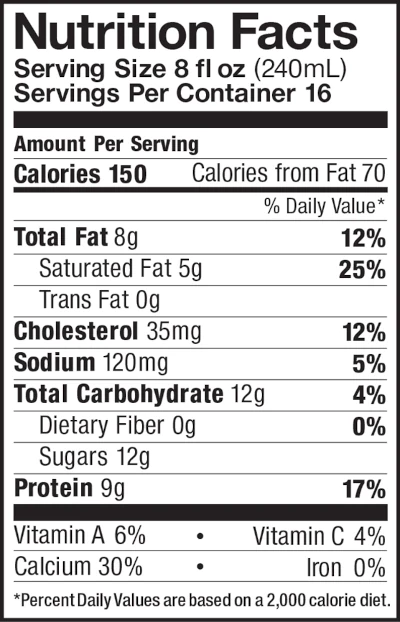
But the benefits of milk aren't confined to the realm of baking. It's a powerhouse of nutrition, offering numerous health benefits. Milk is packed with essential nutrients that our bodies need to function optimally. It's a rich source of calcium, a mineral essential for healthy bones and teeth. It also provides a good amount of Vitamin D, which aids in calcium absorption and plays a crucial role in maintaining bone health.
Moreover, milk is a good source of high-quality protein, providing all nine essential amino acids. The protein content in milk can help in repairing body tissues and maintaining a healthy immune system. It also contributes to a feeling of fullness, which can aid in weight management by reducing the urge to snack between meals.
Milk also contains other vital nutrients like Vitamin B12, which is necessary for blood formation and brain function, and potassium, which helps maintain a healthy blood pressure. The fats present in milk, particularly in full-fat varieties, are not just beneficial for keeping you satiated, but they also contain fat-soluble vitamins like A, D, E, and K.
It's Not Just for Babies
So, the next time you're in the kitchen, take a moment to consider the milk you're using. It's not just a baking necessity. It's a part of our history, our heritage, and our health. And remember, regardless of the type of milk you opt for, it's bound to make your dishes taste like home.
Furthermore, it's worth noting that while milk is a nutritious food, it's important to consume it as part of a balanced diet. Some people may need to choose low-fat or non-dairy alternatives due to health reasons or dietary preferences. Fortunately, there are many options available today to cater to a variety of dietary needs.
Until we meet again, continue creating culinary delights, and always remember, your culinary journey is cherished!